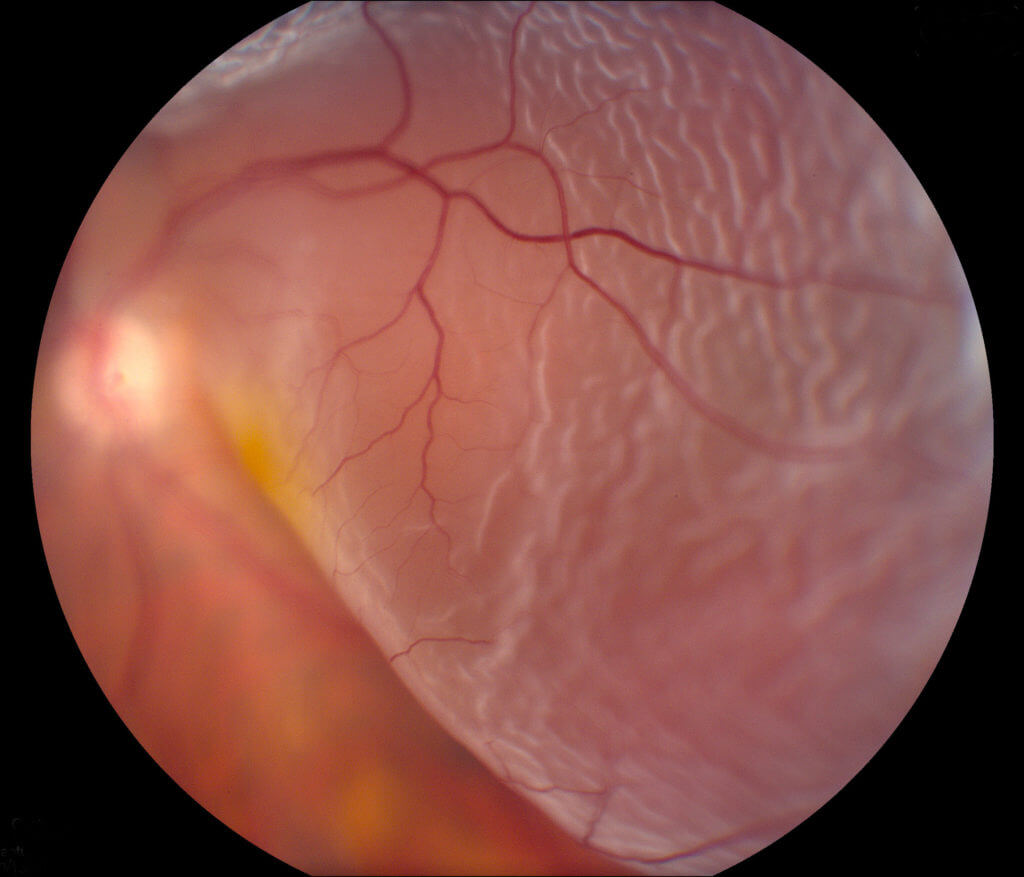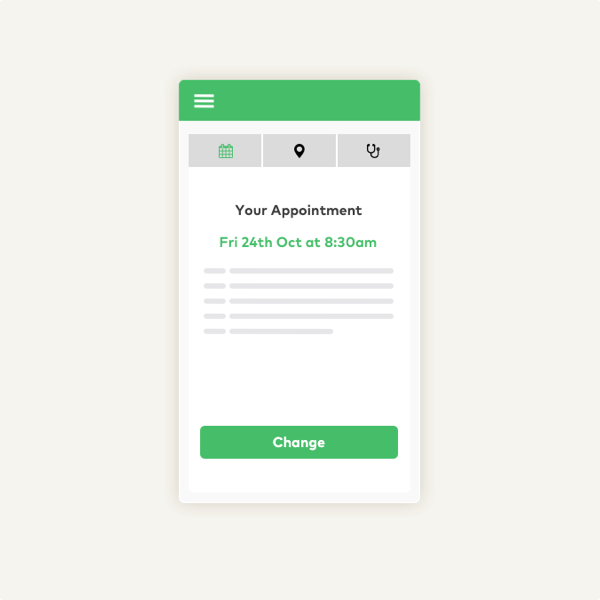
How do you make a patient portal?
Let's find out how to make a patient portal step-by-step.Identify your target audience. ... Follow your patients' priorities. ... Keep patient portal requirements in mind. ... Evaluate the efficiency of the portal. ... Consider data security concerns. ... Find your software development partner.
What is patient portal system?
A patient portal is a secure online website that gives patients convenient, 24-hour access to personal health information from anywhere with an Internet connection. Using a secure username and password, patients can view health information such as: Recent doctor visits. Discharge summaries. Medications.
How much does it cost to implement patient portal?
A patient portal app for the health care sector usually costs $12,500 to build. However, the total cost can be as low as $5,000 or as high as $20,000.
What are the different types of patient portals?
There are two main types of patient portals: a standalone system and an integrated service. Integrated patient portal software functionality usually comes as a part of an EMR system, an EHR system or practice management software. But at their most basic, they're simply web-based tools.
Who develops patient portals?
Some vendors, such as athenahealth, Epic Systems and Cerner offer patient portals as one module of a complete Electronic Health Record (EHR) system. Other vendors, such as Allscripts and Medfusion, offer patient portals that can be integrated with any EHR.
Why is patient portal important?
The Benefits of a Patient Portal You can access all of your personal health information from all of your providers in one place. If you have a team of providers, or see specialists regularly, they can all post results and reminders in a portal. Providers can see what other treatments and advice you are getting.
How do you build an EMR?
How to Build EMR Software for your Business?Step 1: understand which EMR you need. ... Step 2: study the relevant laws. ... Step 3: decide on the functionality of the system. ... Step 4: select the API technology stack. ... Step 5: get started developing EMR.
What is the difference between EHR and EMR?
Although some clinicians use the terms EHR and EMR interchangeably, the benefits they offer vary greatly. An EMR (electronic medical record) is a digital version of a chart with patient information stored in a computer and an EHR (electronic health record) is a digital record of health information.
How much does EMR software cost?
Summary: EMR Pricing # Electronic Medical Records (EMR) software typically costs between $300-$700 dollars per month with one-time, up front costs ranging from $2,000-$33,000 dollars.
What is the most popular patient portal?
Top 10 Patient Portal Software By EMRSystemsEpic EHR Software's MyChart.athenahealth EMR Software's athenaCommunicator.PrognoCIS EMR Software.Cerner Specialty Practice Management Software.eClinicalWorks EMR Software's Patient Portal and Healow App.Greenway PrimeSUITE EHR Software.NextGen Healthcare EHR Software.More items...•
What are the benefits and challenges of using patient portals?
What are the Top Pros and Cons of Adopting Patient Portals?Pro: Better communication with chronically ill patients.Con: Healthcare data security concerns.Pro: More complete and accurate patient information.Con: Difficult patient buy-in.Pro: Increased patient ownership of their own care.
Why do patients not use patient portals?
The researchers found no demographic differences among nonusers who said that a technology hurdle, lack of internet access or no online medical record was the reason why they did not make use of a patient portal.
What are the most promising innovations in patient-portal software?
Integrations with smart sensors and wearables like Apple Watch, FitBit, etc.
The blog seems to talk about several apps, or am I wrong?
Yes, the app for providers and patients will be created as standalone front ends. However, they will still integrate via a cloud-based database layer.
Do you have recommendations for database development?
Modern data management software is compatible with major tech stacks and works in the cloud. You’re free to choose any.
What type of patient portal do you recommend making for an MVP?
It depends. The minimum feature set should include appointment scheduling and provision of health data to patients.
How long does it take to build a custom patient portal solution?
Between 6 and 9 months to release an MVP.
How does a patient portal work?
Through a patient portal, you can successfully reduce the number of unnecessary patient visits to your clinic. It enables patients to consult with you through the messaging system. For example, patients do not need to visit the physician simply to change the medication doses.
What can patients do with patient portals?
Patients can have information whenever and wherever they need it. They can check lab results, prescriptions, update insurance information, manage unpaid balances, and more. According to a survey, 90% adoption of patient portal software in healthcare is the major means to keep up with the health metrics.
Why are patient portals important?
Patient portals are usually used to improve the quality of healthcare provided to the patients. It enables better communication between physicians and their patients. It helps build a better patient-physician relationship and gives the patients more control over their treatment.
Who is the primary user of patient portals?
Patients and clinicians are unquestionably the primary users of patient portals and other patient health systems, but they are not the only stakeholders. To develop a truly effective and usable solution, you must be aware of the “hidden” actors that may also use — or be influenced by — patient software.
Who can benefit from aggregated health records?
Clinicians — including physicians, nurses, and nurse practitioners — can benefit as well. As noted by K.T. Fuji and K.A. Galt, “Healthcare providers want access to a patient’s aggregated health record to enhance their own abilities to accurately and comprehensively treat and monitor the patient.”.
Is Google Health a patient platform?
Google Health is a well-known example of a patient platform that did not live up to initial expectations, but it is not alone. Across North America, patient software, whether developed by a healthcare organization or a third-party software vendor, is suffering from low adoption.
Do patients engage well with interfaces designed for clinicians?
Unfortunately, patients do not normally engage well with interfaces designed for clinicians. Even if the software was designed from the ground up for patients, the work is often done with a “typical patient” in mind; but good luck defining typical.
What is the purpose of a patient portal?
According to the officials, a key priority of such a patient portal is to provide patients with convenient round-the-clock access to personal health information (PHI) via the Internet.
How do authorized patients interact with healthcare providers?
Besides, authorized patients can interact with healthcare providers by submitting messages, scheduling appointments, or requesting prescription renewals through the portal. Among other system’s features there is the ability to get reminders and notifications for lab results, upcoming visits and diagnostic investigations.
Patient Portal features
Because patients are faced with a lengthy registration procedure, workflow at the front end of practice will suffer. It will minimize wait times and encourage fewer burdens on front desk staff by enabling patients to register electronically.
Want to Build Patient Portal for Your Clinic?
We build plenty of Healthcare Portals! Get the FREE estimation of your product idea.
Cost of the Patient Portals Development
There are three types of cost calculation based on the completeness of three types of specifications: task scope, User Stories, and Software Requirement Specification.
Related posts
Share Telemedicine has not only transformed the way of treatments for adults but also for infants. Telemedicine...
What are patient portals?
Patient portals generate many associated mandatory and medical compliance issues. Practices must consider their business associates and chain-of-trust issues that arise when sending information by electronic transmission. Medical companies deal with insurance companies, Internet service providers, labs, pharmacies, billing and coding services, hospitals and other practices across different medical-related specialties.
What stakeholders are involved in developing a patient portal?
These include the practice's senior leadership, patient advocates in the community, risk management stakeholders like insurers and legal counsel, physicians and clinicians and marketing staffs and health information management professionals who need to sell the benefits of using the patient portal to patients, caregivers and even some staff members who might hesitate to interact with patients electronically. Patient portals enhance communications, and sounding out these stakeholders is essential for developing an effective portal because each will be using the technology at ever-increasing rates.
What are the challenges of implementing HIPAA compliant patient portals?
The challenges of implementing HIPAA compliant patient portals depend on a provider's IT infrastructure and its operating system's complexity and interoperability. There are also the legal and regulatory requirements that include meeting mandatory HIPAA guidelines and voluntary best practices. The challenges of HIPAA compliant portal development include:
What is patient portal?
In a nutshell, a patient portal is the user-facing component of an electronic health record (EHR) solution, which is intended to simplify patients’ access to medical data — i. e., physician notes, laboratory results, billing information, — and drive patient participation.
What is the educational section of a patient portal?
Designed to replace printed supplementary materials promoting healthy habits and effective chronic condition management, the educational section of a patient portal allows physicians to develop personalized outreach campaigns and unlock the value of technology-assisted population health management.
What is the importance of integration with electronic health records?
Often regarded as the cornerstone of patient portal development, the integration with electronic health records ensures online access to medical information, including after-visit summaries, laboratory test results, medical images and clinical notes. Optionally, healthcare providers may take a step towards a deeper integration with hospital software and allow patients to self-manage the information regarding medication intake, allergies and immunization and upload files, which would be automatically added to their personal health records.
What is a live chat in a hospital?
Besides real-time communication with hospital team and other specialists involved in care delivery, a live chat with file sharing capabilities can facilitate remote diagnosis and consultations for patients with both minor issues and chronic conditions.
What is eBilling payment?
Leveraged through secure third-party payment gateways, such as Stripe or PayPal, the eBilling feature enables care providers to seek reimbursements in a transparent way, split expenses between insurance companies and individuals and allow patients to pay bills online.

Where’s Your Typical Patient?
Engage Patients The Right Ways
- Once you have identified a specific set of primary patient users, it is time to determine what will engage those patients and keep them returning. What information and features will they value most? How must that information be presented initially and over time? Healthcare consumers will submit their patient data only if they are motivated to do so. Any mobile application, patient port…
Understand & Address The Concerns of Clinicians
- Patients are not the only users who stand to benefit from patient software. Clinicians — including physicians, nurses, and nurse practitioners — can benefit as well. As noted by K.T. Fuji and K.A. Galt, “Healthcare providers want access to a patient’s aggregated health record to enhance their own abilities to accurately and comprehensively treat and monitor the patient.” While our advice …
Considering Additional Stakeholders
- Patients and clinicians are unquestionably the primary users of patient portals and other patient health systems, but they are not the only stakeholders. To develop a truly effective and usable solution, you must be aware of the “hidden” actors that may also use — or be influenced by — patient software. In a healthcare setting, a number of user gro...
Popular Posts:
- 1. manet health patient portal
- 2. loma linda patient portal
- 3. hunt regional patient portal
- 4. advocate christ hospital patient portal
- 5. crawford memorial hospital patient portal
- 6. westchester medical center patient portal
- 7. chc patient portal
- 8. aetna patient portal
- 9. oga patient portal
- 10. medstar georgetown patient portal